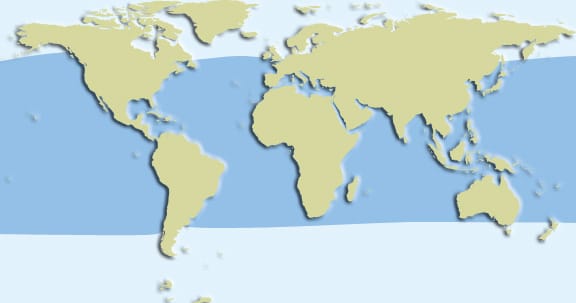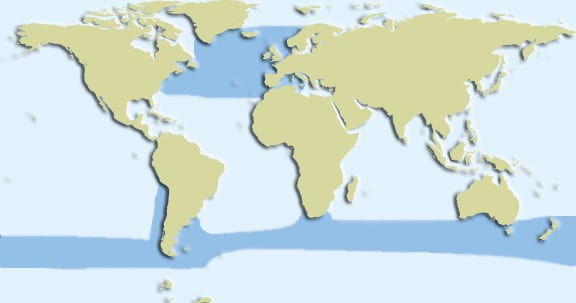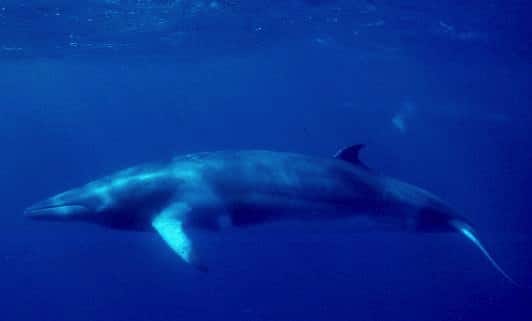Pilot Whale – genus Globicephala
Description
Pilot Whales are dark black in color most of the time. Some of them are a dark gray. There are two species of the Pilot whale, but it is often very hard to tell them apart. They generally both get lumped into this basic category. One has a short fin while the other features one that is long. These whales are very large, and only the killer whale is bigger than they are.
Males are the largest with a length of up to 25 feet and they can weigh as much as three tons. The females only weigh about half of that and they can be up to 16 feet in length.
Behavior
You may not get to see the Pilot Whale as often as other species. This is because it tends to stick to the deeper waters. They have been praised for their extremely high level of intelligence. They are said to be very easy to train and they are also social creatures. They often form groups of more than 100 in them. They have been found from time to time in large groups on the beaches. It is believed this is due to an infestation of parasites that affects the brain’s ability to stay on course.
Diet/Feeding
The Pilot Whale has quite a selection when it comes to the foods they eat. Their diet includes squid, octopus, herring, and various small fish. They tend to prefer the squid though so that is the primary food source if it is readily available for them. They eat about 70 pounds of food daily which is very little compared to other types of whales their size.
Observation of the Pilot Whales indicate that they work together in order to get the food that they want. Engaged in a type of high pitched whistle, they will create a circle that seems to mesmerize the prey and then they can consume it with ease.
Distribution
There is nowhere you won’t find the Pilot Whale. In fact, they are believed to be the most distributed whale in the world. They enjoy both the tropic and the temperate waters. Generally you will find those with the shorter fins in the warmer waters. The two types of physical characteristic Pilot Whales tend to stay separate from each other. Sometimes they do cross paths though during the migration process.

|

|
Reproduction
Females mature faster than the males at about 9 years of age. For the males it is around 15 years old. The process of mating takes place after aggressive acts from the males with each other. This includes shocks melon to melon in order to get the attention of the females around them.
The calves emerge about 4.7 feet long and weighing just over 135 pounds. They will receive milk from their mothers for almost two years. Some Pilot Whales observed have been noted to nurse a calf for up to 10 years. This is quite puzzling to researchers. They believe it may have something to do with the older females. They may do this with their last offspring.
Human Interaction
The Japanese tend to savor the meat from the Pilot Whale so it often fall victim of their whaling efforts. Since Pilot Whales travel in large groups the easily fall victim to whaling. There are complex set ups that move an entire group of them towards the beach so that they can be killed.
Conservation
Pilot Whale is considered as “data deficient” species in the Red List of Threatened species. They seem to do extremely well in captivity which can be a huge benefit if some severe forms of conservation need to take place later on.







